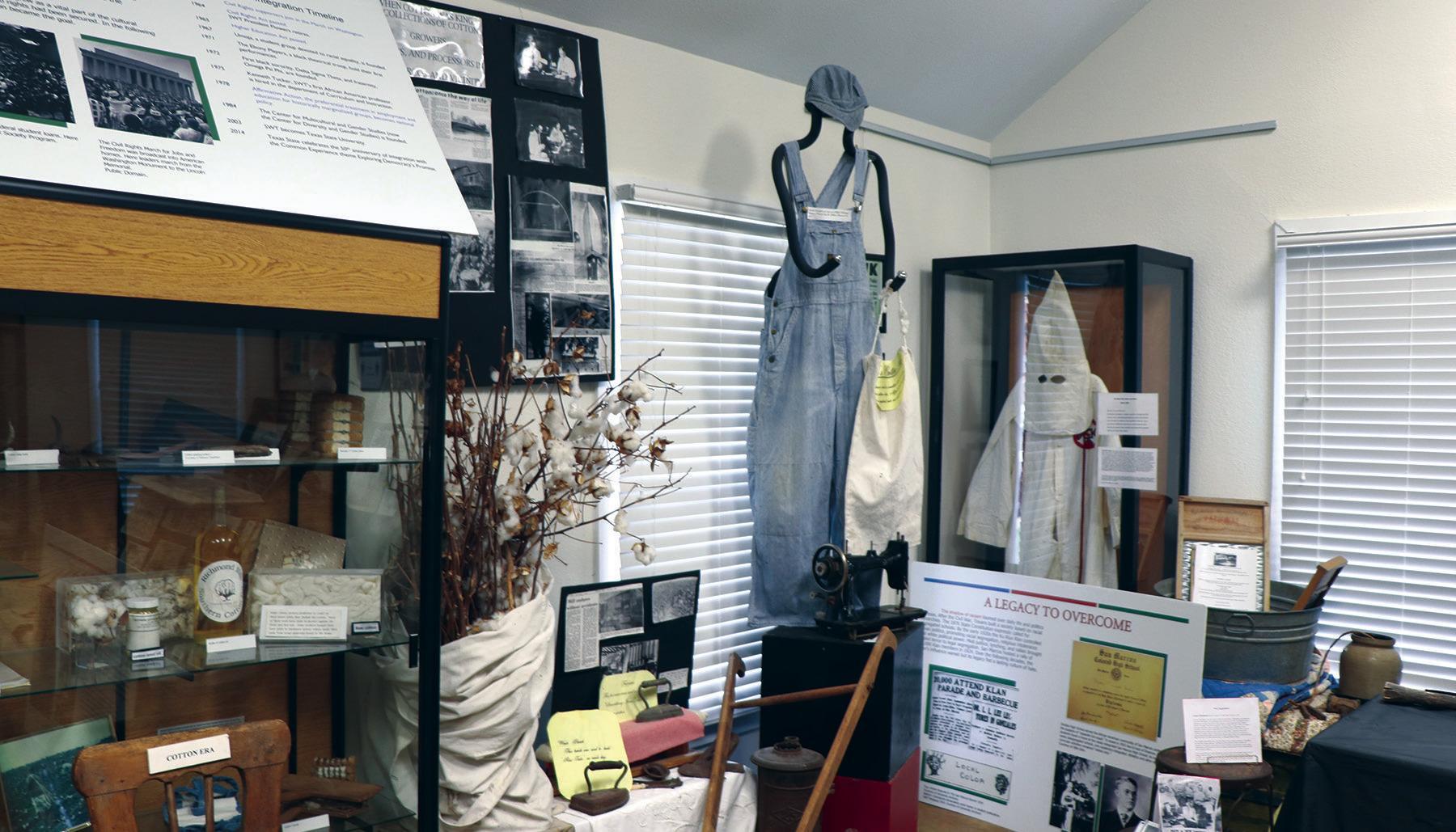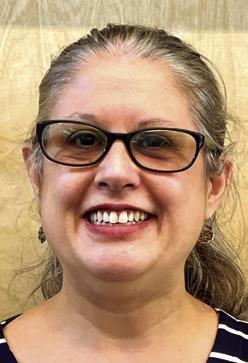
The Calaboose Museum has Ku Klux Klan artifacts as part of its permanent exhibit.
Photo by Celeste Cook

SAN MARCOS PUBLIC LIBRARY
625 E. HOPKINS ST.
512-393-8200
Answers to Go
Q.What role has the Ku Klux Klan had in San Marcos? A. I found quite a few articles written about the Ku Klux Klan (KKK) in the archives of the “San Marcos Daily Record,” found online at the library’s website: hank. ci.san-marcos.tx.us/ Docs/History/Local. htm. MOST of them were very positive. As Dr. Holt, the archivist for the Calaboose African American History Museum described it, San Marcos was a “Klan Friendly” town. (youtube. com/watch?v=CxHStr6wfqQ) The KKK donated money to the hospital, encouraged people to go to church and put a good face on their activities. It functioned here much as other social organizations would, and the city welcomed the KKK openly. However, there was a sinister and deceptive side to their public dealings. For example, on July 20, 1923, the KKK pub-lished a letter in the “San Marcos Record”notifying readers that the KKK had a secret “investigating committee” to report wrongdoing by citizens. In the very same letter, citizens were assured that “it is the policy of the Ku Klux Klan to assist in all worthy causes.” Another example involves the burning of the First Baptist Church in San Marcos in 1873. While they gave money to the community and they stressed morality, religion and going to church, they burnt down a church.
On Aug. 29, 1974, reporter Rowe Ray wrote a piece for the “Daily Record” that was titled “Ku Klux Klan Celebration in San Marcos.” In that article, he recounted the original reporting of an event that took place 50 years before. It read: “Monday was the red letter day in San Marcos Ku Klux Kan history. As had been advertised, a monster free barbecue was given to all Klansmen and families in the afternoon and at night the biggest Klan parade ever staged in a town of this size in Texas wound its way through the principal streets of the city… Extensive preparations were made to take care of the thousands of visitors which were expected. Most all of the business houses of the town carried a placard or banner with the words, “Welcome Klansmen” on it. Large banners were spread across the streets carrying welcome signs. A large electric cross was suspended at the northwest corner of the square which shone with brilliance after dark. According to statements heard from visitors, no other city has ever extended such a welcome to Klansmen, and throughout the parade groups of Klansmen cheered San Marcos…Much praise has been given local fire department members who acted as traffic officers throughout the day. They also secured barrels that were placed conveniently about the city and filled with ice water for the visitors.”
What Rowe Ray was relating is the story of a huge KKK rally held on July 22, 1924, in San Marcos. When Ray wrote the retrospective article, he said, “Such a site in San Marcos in 1974 probably can’t even be imagined by most who now live in the city, but 50 years ago, more than 20,000 people traveled to San Marcos to watch and take part in the largest KKK gathering ever held in Central Texas.” Perhaps it was hard for readers to imagine in 1974 (and it may be still hard for us to imagine today) but it happened.
There were other signs of racism behind the facade the KKK presented. Sometimes it wasn’t even well hidden. In the same “San Marcos Record” article that stated that they would be “investigating wrongdoing,” the KKK blatantly said, “We believe in White Supremacy and we believe that white men should keep white men’s places.”
In the library’s files on the Ku Klux Klan, there is a June 1988 oral history from Charley Williams as part of the Institute of Texan Cultures Oral History Program. Mr. Williams, among other topics, discussed how in the early 1930s there was a curfew for “all the black people in town” and “they had to be in by sundown.” The KKK would patrol the streets at night after curfew. “But if they caught any of them…” Thus, the role the Ku Klux Klan had in San Marcos was presented as helpful and community based but was much more sinister.
Suzanne Sanders is the columnist for the library. She is the Community Services Manager for the San Marcos Public Library and came from the Austin Public Library in 2015 after having served there as a librarian for over 20 years. She gratefully accepts your questions for this column.











